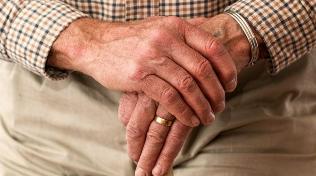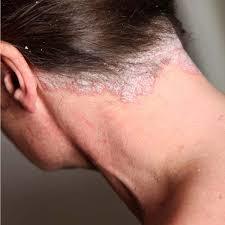A characteristic feature of psoriasis is the predominant location of papules symmetrically on the skin of the extensor surface of the hands, feet, scalp.

Despite the fact that the leading role in the development of psoriasis is the presence of genetic predisposition (psoriasis the disease is hereditary), the momentum, the appearance of the disease can serve a variety of Exo, endogenous factors (the development of psoriasis, the nervous system, endocrine diseases, after infectious diseases, etc.).
The etiological factors of the disease
The disease is not sexual inclination, therefore, the frequency of occurrence of psoriasis in men and women is no different. 12% of patients the disease first develops, a maximum of ten years. Twenty years before psoriasis develops, the forty-six percent of patients, but not more than thirty years sixty percent of.
The development of the psoriasis two age peaks:
- twenty-six of fifty-four years in the case of men;
- fifteen fifty-four years the women.
Causes of psoriasis in adults
The exact cause of psoriasis is not known. The leading role in the disease pathogenesis belongs to the genetic predisposition. In addition, a significant role to play in the event immunological instability, lipid symptoms, if the patient foci of chronic infection.
In favor of genetic theories (inherited causes of psoriasis) is supported by the fact that the disease is always found not only the patient but also the relatives.
To identify a predisposition to psoriasis can be if you performed a classic analysis of the genome. These patients may be ten loci of the chromosomes responsible for genetic predisposition to the disease (pso bikers-1-9, and HLA – B27, 17, etc.).
The main gene responsible of the maximum expressed by the congenital predisposition to develop the disease, I believe that the PSORS1.
Furthermore, the pathogenesis of psoriasis play an important role in genetically determined disorders of metabolism of carbohydrates, lipids. The majority of patients with psoriasis show severe hyperlipidemia, metabolic syndrome. In this regard, the patients with psoriasis, there is a high risk of severe early atherosclerotic vascular lesions and cardiovascular disease.
In addition to hyperlipidemia, noting the disturbed metabolism of fatty acids (fatty acids), increased production of free radicals compounds, which are involved in the keratinization of the epidermis, etc.
The study the psoriasis plaques, it turns out, is a high concentration of oxidized low density lipoprotein.
The main markers for the assessment of proliferation of epithelial cells of the outbreak of psoriasis or protein Ki67, keratin, six, eleven, twelve. These markers are responsible for the pronounced the processes of hyperplasia, diseases of the differentiation of cells, development of inflammatory reactions in the skin.
Due to this, even in the initial stages of the clinical recovery of psoriasis (disappearance of inflammation of the epidermis) may persist inflammatory process in the blood vessels in the skin.
Also, the development of inflammation, the disease, psoriasis is the role of the activated T-lymphocytic cells, mediators, inflammatory reactions, inflammation, kiserek. The study of the microflora of the skin, patients with psoriasis show streptococci, provoke the development or worsening of guttate psoriasis.
Immunological basis in the pathogenesis of psoriasis, the progression of the corresponding cells, activated CD4+ T-lymphocyte cells cytokines anti-inflammatory effect. The favor to this theory is proven by the fact that the monoclonal antibodies of the psoriasis against active-active CD4+ T-lymphocyte cells of significant therapeutic impact. Also effective cure for psoriasis are drugs that are designed to inhibit the production factors tumor necrosis.
Infectious the psoriasis to others
No. Psoriasis is a genetic disease.
This psoriasis over the person who
No. Catch the psoriasis from another person is impossible. Despite the fact that the streptococcus infection may be the triggering factor, a person without a genetic predisposition to the disease, the psoriasis does not occur.
This psoriasis sexually transmitted
No. Psoriasis is not contagious, is not transmitted, neither in the air, contact, or sexually or in other ways.
If you accept the psoriasis hereditary
The development of psoriasis requires a genetic (hereditary) predisposition. Therefore, the disease is often found in close relatives. The presence of psoriasis in the parents, there is a high risk of psoriasis in a child.
However, some authors distinguish the psoriasis is the second type. It is assumed that this version of psoriasis that develops in patients after forty years affects mainly the joints, and nail plate is not linked to heredity.
Can you die from psoriasis
No. Psoriasis is not a life-threatening disease. The prognosis in these patients is favourable.
However, psoriasis is much more difficult to complete the patient's life, which is very discomfort, and reduce the social activities.
It should also be noted that the pustular psoriasis may occur it is extremely difficult, accompanied by emptying and pus in the pustules, a further fall in the skin type of "purulent lakes". In this case, maybe the development of the erythroderma, and secondary bacterial complications joint damage, etc.
Triggering factors of psoriasis development
Aggravating factor, that the exacerbations of psoriasis:
- injuries to the skin;
- endocrine disorders;
- pregnancy;
- the appearance of metabolic disorders;
- the drugs-beta-blockers, malaria, SR-V, etc.;
- the presence of foci of chronic infection (particularly streptococcal infection);
- alcohol abuse;
- Smoking;
- the excessive sun exposure;
- eating spicy, sweet, greasy foods, etc;
- acute infectious diseases;
- exacerbation of allergic diseases;
- the stress, emotional overload (psoriasis nerves becomes aggravated more often).
The classification of psoriasis
The species isolated in the form of psoriasis:
- vulgaris (common psoriasis);
- watery;
- chronic Palmar-plantar;
- warty;
- follicular;
- nail;
- pustular;
The disease can be progressive, stationary.
If the lesion is to distinguish limited, common, and general flow.
It is also possible that the seasonality of exacerbations: winter, summer, unspecified (non-season) exacerbation of psoriasis.
Pictures, symptoms, treatment of psoriasis in adults

The psoriasis is characterized by the appearance of pinkish-red or bright red papules, covered with silvery, white scales, loose texture. Itchy skin may be missing. Many patients noted the appearance of a feeling of tightness in the skin.
Intense itching is characterized, as a rule, the arthritis lesions of the scalp, and the perineum.
The appearance of pain in the joints observed in the development of psoriatic arthritis.
The most typical manifestations of psoriasis is a triad of specific symptoms :
- the appearance of the phenomenon stearin spot (strengthening of peeling during the diagnosis of arthritis papules, which become similar to a drop of stearin);
- the appearance of the terminal films (the appearance of the thin, transparent film remaining after when poskablivanii will be separated from the peeling);
- the appearance of the blood dew, or the appearance of the exact bleeding site, the reject terminal of the movies.
Arthritis papules wear, isolated or fused. The size can vary from small which a large surface of the skin. The most common localization of papules on the elbows, knees, head (scalp) and back.
In rare cases, plaque can affect the mucous membranes of the lips, oral cavity.
Children, the elderly, the sick, the disabled diabetes may develop a folded form of the disease. In this case, the affected skin behind the ears, armpits, groin, buttocks, around the navel, under the Breast.
The patients with this psoriasis is not peeling. Surface arthritis lesions may be smooth, glossy, red. In some cases, it may cause maceration of the folds.
In some patients the only manifestation of the disease may be plaque the skin and the genital mucosa.
Usually psoriasis skin lesions is symmetrical in nature, but in some patients a unilateral rash. You can also appear curly arthritis lesions (annular, arcuate, geographical, etc.).
Patients with long course of disease, the long-existing plaques in the skin of the lumbar, gluteal region may be accompanied by increased warty growths.
In addition, the reason for the appearance of verrucous psoriasis:
- purulent infection of the skin;
- bad external treatment (usually custom);
- the excess body weight.
When warty forms of the disease, the balance starts to stick together between each other, which on the surface of the plaques yellow crusts.
Some patients may occur independently occur Palmar-plantar psoriasis. In this case, the patient is worried, painful cracks, blisters, papules, erythematous-squamous plaques on the palms, feet.
A common manifestation of psoriasis, the lesions of the nail plate. In most cases, the appearance of dotted indentations in the surface of the nail (dystrophy). Also appear in the deformation, the nail, the longitudinal transverse furrows, the thickened nail plate, loosening, and changing colors, the bleeding under the nail plate.
The erythroderma psoriatic arthritis, emerging usually against a background of excessive sun exposure or improper topical treatment, there is a pronounced swelling on the skin, redness, severe itching, desquamation, fever, weakness, loss of appetite. Severe can cause anemia, heart failure, and diseases of the kidney, the liver, dehydration, alopecia areata.
Psoriasis and pregnancy is endangering the child, especially
Psoriasis is not a violation of the reproductive function is not contraindicated in pregnancy. It should be noted that many of the pregnant women, the disease is easier than normal. However, approximately twenty percent of women may be expressed exacerbation of the disease.
In general, psoriasis does not interfere with the course of pregnancy and threatens the life of a child. However, in patients with arthritis, by increasing the load on the joints, there could be significant deterioration. The generalized form of pustular psoriasis, the possible emergence of secondary bacterial complications.
It should be noted that since the psoriasis is not true for infectious diseases, the mother is allowed contact with the child breast-feed. The likelihood of developing psoriasis in the future is equal to about 15-20% if the patient has only one parent and approximately 50% when both parents are sick.
The main difficulty in the treatment of psoriasis in pregnant women, they are contraindicated with most medicines. Therefore, if you are planning pregnancy, tell your doctor so adapted to the treatment.
To self-medicate is strictly prohibited to cause significant damage to both the mother and the baby (certain drugs toxic effects on the fetus).
Diagnosis of the disease
The diagnosis on the basis of specific symptoms (arthritis triad). And, if necessary, the data on the histological, immunological, and radiological studies.























